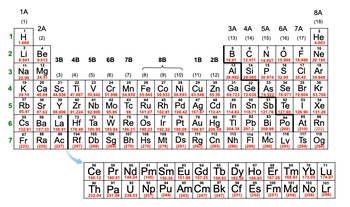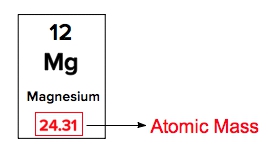So atomic mass is the mass of an element that includes the masses of all three subatomic particles. So we're looking at all the protons, neutrons and electrons for a given element. We can also say that atomic masses of elements can be found by simply looking at the periodic table.
So if we take a look here, the first element of the periodic table is H. H stands for hydrogen. Now later on we'll go into how element symbols are related to names. But for now realize that is hydrogen. This number below it, this 1.008 here that we have, that is its atomic mass. And if we look, we can see that a majority of the elements have atomic masses that are not whole numbers.
Well, that's because the atomic mass of an element is an average of all of its isotopes. So hydrogen has several different isotopes, and from those isotopes we're taking the average mass. That's why we do not have whole numbers. Now we can say here that this atomic mass can come in different units. Now we're used to one of them, and that would be grams per mole.
That's our normal units for atomic mass, but can also be expressed as atomic mass units or Daltons. Now recall that an atomic mass unit itself is equal to 1.66×10-27 kg. So just realize when it comes to the periodic table, we have the element symbol for each of these elements, and this number on the bottom, which is not a whole number, is the atomic mass.
The number on the top, which will always be a whole number. That is our atomic number. And remember, your atomic number uses the variable Z. So keep this in mind when looking at any periodic table. Now that we've talked about the basic parts of a typical periodic table, let's continue on with additional videos.




